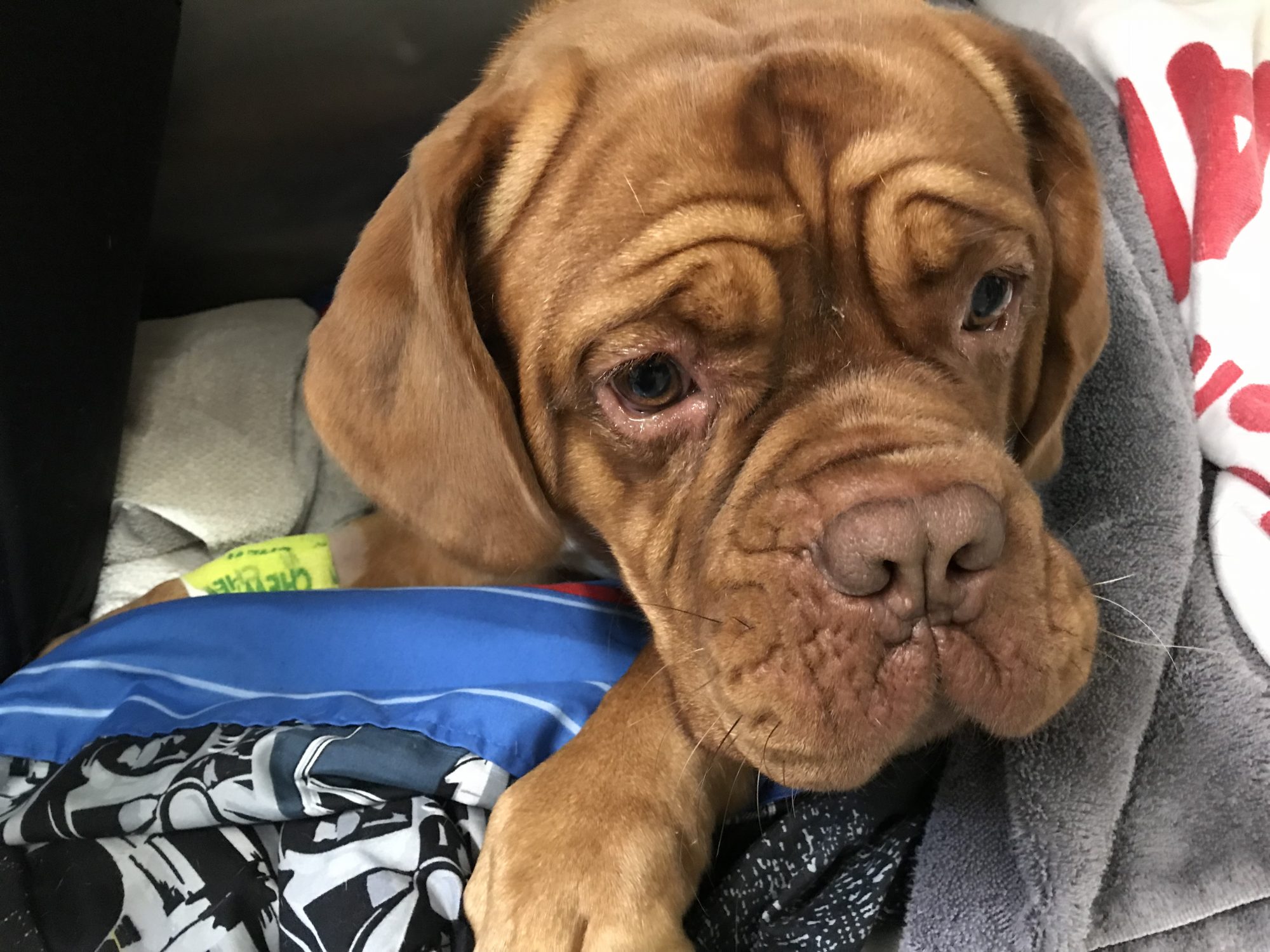Dr. Phil Zeltzman’s Blog
Why do we do what we do? (Part 2)
Have you ever wondered why vets and their nurses do what they do?

Ruby, a 2 year old Dogue de Bordeaux, wakes up from anesthesia after a TPLO to address a tear of her ACL
Last week, we described 5 things we do around surgery time, and why we do them
This week, we share 5 more features we provide routinely to your pet during anesthesia and surgery.
6. Why do we place a tube down the throat?
It’s not just down the throat, it’s into the windpipe, so that oxygen and anesthetic gas can be delivered to the lungs.
Interestingly, anesthetic gas is so powerful (yet safe) these days, that with the proper pain medications on board, we can often get by with only 1 or 2% anesthesia gas and 98 or 99% oxygen.
The tube allows us to have control of the patients breathing. So for example, we can breathe for the patient or “give a breath” if the patient doesn’t take enough oxygen in, or keeps too much CO2 in.
7. What do we monitor during anesthesia?
Monitoring a patient allows us to make anesthesia as safe as humanly possible. Depending on the sophistication of the hospital, we monitor multiple values, including:
. Temperature
. Heart rate
. EKG
. Blood pressure
. Oxygen level
. CO2 level
8. Why do we monitor anesthesia?
100% of the clinics I do surgery at have a dedicated anesthesia nurse, whose only job is to monitor the patient and make sure anesthesia is as safe as possible (if you read between the lines, this means that not all clinics take that precaution…).
Why does a nurse monitor a patient under anesthesia?
To make sure that the patient is sleeping soundly, and that the numbers on the anesthesia monitor are what they should be. Besides the monitor, nurses check on the patient. They check on the color of the gums, the depth of the anesthesia, the pulse, the breathing etc.
9. What’s the end result of monitoring?
Monitoring patients closely allows us to catch changes and correct them before they become a bigger problem.
* If you are not monitoring a patient’s blood pressure, how would you know that it is low and needs to be corrected?
* If the temperature is too low, we add even more devices that we had to begin with, in order to keep the patient warm.
* If you are not monitoring a patient’s EKG, how would you know that the heartbeat is abnormal and needs to be corrected?
In some cases, the nurse knows exactly what to do. In other cases, the doctor and the nurse come up with a plan to correct whatever needs to be corrected.
10. What happens once surgery is over?
Anesthesia stops after the patient is cleaned up and ideally has been on 100% oxygen for a while. Then the patient goes to the recovery area. There, the patient must still be monitored very closely.
Here is a little secret (too) few people know about: most pet owners are scared of anesthesia. In fact, most pets who die (thankfully extremely rarely), do so AFTER anesthesia is over. So this part is still critical and must be taken very seriously.
Similar to what is done during anesthesia, certain things are monitored during recovery: pulse, heart rate, gum color, temperature, as well as comfort level. Once the patient becomes conscious and won’t tolerate the breathing tube in their throat, the tube is removed.
Still, patients must be monitored until they are fully aware of their surroundings!
And then, nurses must still keep a close eye on their patients, on and off, until they feel confident that they are “out of the woods.”
In the end, these 5 steps are designed to make anesthesia and surgery safer for your pet. This is our ultimate goal.
Phil Zeltzman, DVM, DACVS, CVJ, Fear Free Certified

Dr. Phil Zeltzman is a traveling veterinary surgeon in Pennsylvania & New Jersey. An award-winning author, he loves to share his adventures in practice along with information about vet medicine and surgery that can really help your pets. Dr. Zeltzman specializes in orthopedic, neurologic, cancer, and soft tissue surgeries for dogs, cats, and small exotics. By working with local family vets, he offers the best surgical care, safest anesthesia, and utmost pain management to all his patients. Sign up to get an email when he updates his blog, and follow him on Facebook, too!

